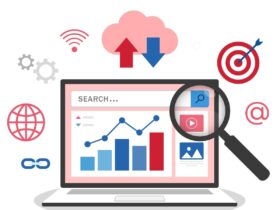Margin trading is an increasingly popular way for traders to increase profits by leveraging borrowed funds. It is a trading method that enables traders to invest in assets, such as stocks or cryptocurrencies. This is without having to put up the full amount of capital required for the investment. While Margin Trading Facility can be a lucrative way to increase your returns, it also carries several significant risks that you should be aware of. This beginner’s guide will provide you with information on how to make the most of margin trading while minimizing risks.
Understanding Margin Trading: An Overview
Margin trading is vital in the financial market because it helps boost traders’ purchasing power. Suppose a trader wants to buy 100 shares of a company that cost $50 each, and they only have $5,000 in capital. In this case, they would only be able to buy 100 shares. However, if the trader can use margin trading, they can borrow funds from a broker and use that money to make the purchase.
Dangers and Risks Involved in Margin Trading
Margin trading can carry significant risks, making it essential that traders understand these risks. One of the most common dangers is margin calls. If the value of your assets falls below a certain level, your broker may ask you to deposit more money to cover the loss. If you are unable to do so, they may liquidate your assets to recover the money they lent you. Other risks include high-interest rates, potential losses, and market volatility.
Choosing the Right Broker for Margin Trading
Choosing the right broker is crucial when it comes to margin trading. Look for a broker with a good reputation, low-interest rates, and excellent liquidity. Ensure the broker is regulated and licensed to reduce the risk of fraud. Additionally, check the broker’s margin requirements, as some brokers offer lower margins than others.
Identifying the Most Suitable Margin Trading Platforms
When selecting a margin online trading platform, consider the fees charged by the platform, the user interface, and the quality and quantity of trading tools available. Choose a platform that fits your trading preferences, whether you need extensive research tools or want to execute trades quickly and efficiently.
Developing a Margin Trading Strategy
As discussed earlier, a vital risk associated with margin trading is a margin call. To avoid margin calls or liquidation, ensure that you have enough capital in your account to cover any potential losses. Determine the maximum amount you are willing to risk on each trade and set stop-loss orders to automatically exit trades when the price falls below a certain level.
Setting Stop-Loss & Take-Profit Orders
Setting stop-loss and take-profit orders are essential parts of any margin trading strategy. These orders can help you manage risk and potential losses. A stop-loss order will automatically sell your position if the price falls below a certain level, while a take-profit order will automatically close your position if the price reaches a specific level of profit.
Conclusion
Margin trading can be an exciting way for traders to increase profits, but it carries significant risks. One of the main challenges of margin trading is managing your risk effectively. By identifying your risk tolerance levels and setting stop-loss orders, you can minimize losses. Always choose a reliable broker with a good reputation, and make sure to read and understand the terms and conditions before participating in margin trading. With careful planning and a solid margin trading strategy, you can increase your profits while minimizing risks.












